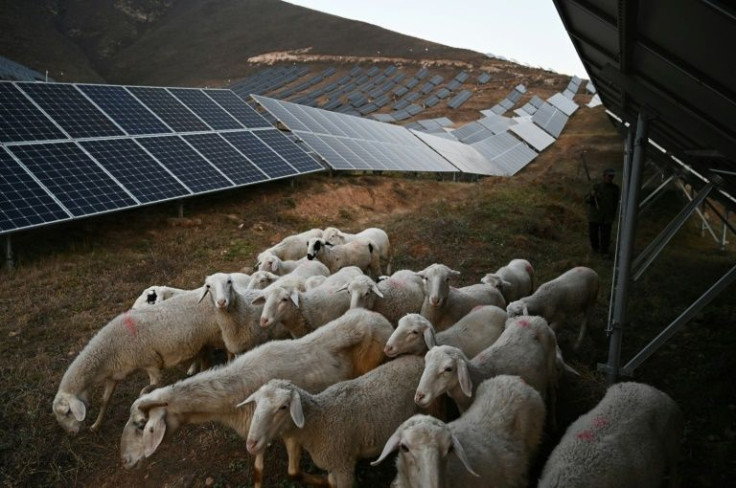Sun Shines Brightly On Asia As China, India, Japan Bask In Solar Glory

Predominantly driven by China, Asia has made stellar progress in solar energy production. With its energy usage set to almost double by mid-century, Asia is set to hold the honor of the most prolific producer on the global stage for some time.
It appears that the world is undergoing something of a solar boom with record levels in recent years. The amount of sunlight that reaches the earth's in one and a half hours is more than enough to power the entire world's electricity consumption for a year.
For centuries, the world banked on energy from fossil fuels. However, they have imposed enormous environmental and economic costs. It is expected that solar energy to enjoy a buoyant growth rate as the global solar industry is expected to grow by 142. 64 GW during 2021-2025.
In a report pro-solar association Solar Power Europe stated that a record 138.2 gigawatts (GW) of solar installed across the world in 2020, representing an 18-percent growth compared with 2019.
The spectacular growth comes as part of a broader success story. Data by the International Renewable Energy Agency stated that solar energy capacity has been moving in tandem with wind energy due to the growth in Asia particularly capacity boosts in China, Japan, India, Vietnam, and South Korea.
The Paris-based International Energy Agency expects annual additions of solar PV development to reach 162 GW in 2022, accounting for 55 percent of all renewable-energy expansion this year, the International Banker reported Jan. 7.
Asia, which accounts for almost half of global energy demand, has seen record-breaking growth in solar energy production.
China is a leader in the solar industry and added 48.2 GW during 2020, bringing its cumulative installed capacity to 253.4 GW. The Asian powerhouse and the world's largest energy market currently lords over with a 35 percent global market share as its annual PV installations increased by 60 percent year-over-year in 2020, representing more than one-third of annual deployment worldwide.
The U.S. comes second with a cumulative installed capacity of 93.2 GW at the end of 2020. The US is the biggest non-Asian nation to contribute to the impressive growth trajectory in solar energy with the more solar photovoltaic (PV) installations which jumped by 43 percent in 2020 to hit an all-time high of 19.2 GW of new capacity, said a report from the Solar Energy Industries Association.
The solar industry is riding high in the US on policies like the solar investment tax credit, declining costs, and rising demand from private and public sectors.
Currently, more than 3 percent of power production in the U.S. comes from solar energy, employing around 230,000 hands. The industry is expected to add a cumulative 324 GW of new capacity to reach a total of 419 GW over the next decade.
Japan, ranks third in total installed capacity to 71.4 GW. Through a policy change, the land of the rising sun is planning to make Japan a carbon-neutral and decarbonized society by 2050.
Germany ranks fourth. In May 2021, Germany effected changes to its Climate Change Act to become climate neutral by 2045. The largest economy in the EU added 4.9 GW of installed solar energy capacity during 2020 to take the total installed capacity to 53.9 GW.
The market for solar energy in Germany is expected to grow at a CAGR of more than 6.12 percent from 2020 to 2025.
The European Union's European Green Deal which has raised the target of GHG emissions also came in handy for the German growth in the solar industry.
As part of climate policies, the EU has proposed an overhaul of renewable energy rules to increase the use of sources such as wind, solar, and biomass energy. France, Spain, Sweden, Finland, Latvia, Austria, and Denmark have made great progress in solar energy production among the EU nations.
India stands fifth in solar power installed capacity. The South Asian nation added 4.4 GW capacity In 2020 to make the total installed capacity to 47.4 GW. The second-largest economy in Asia plans to 114 GW from solar energy by 2022.
Italy, Australia, Vietnam, South Korea, and the United Kingdom find a place on the list of top ten nations in terms of cumulative installed solar capacity.
Indonesia, Southeast Asia's leading economy, and Bangladesh, representing 3 percent of the world's energy consumption, in Asia have also made great strides in solar energy production.
Africa, a continent with a population of over 600 million, is also betting big on solar energy. Mozambique, Ethiopia, Zambia, Kenya, and Ghana are the leading players. Using nearly 100 percent green and sustainable energy, Mozambique is the greenest country in the world, followed by Ghana where 68.26 percent of energy demands are met from renewable sources.
The global economy has started to look at the infinite sun to stave off the man-made climate crisis on the earth.





